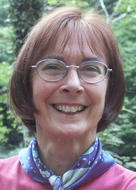 Post by Shari D Sturdivant on Yahoo 360
Post by Shari D Sturdivant on Yahoo 360
Our Picture of the Universe
Any physical theory is always provisional, in the sense that it is only a hypothesis: you can never prove it. No matter how many times the results of experiments agree with some theory, you can never be sure that the next time the result will not contradict the theory. On the other hand, you can disprove a theory by finding even a single observation that disagrees with the predictions of the theory... Each time new experiments are observed to agree with the predictions the theory survives, and our confidence in it is increased; but if ever a new observation is found to disagree, we have to abandon or modify the theory. 11
Today scientists describe the universe in terms of two basic partial theories - the general theory of relativity and quantum mechanics... The general theory of relativity describes the force of gravity and the large-scale structure of the universe, that is, the structure on scales from only a few miles to as large as a million million million million (1 with twenty-four zeros after it) miles, the size of the observable universe. Quantum mechanics, on the other hands, deals with phenomena on extremely small scales, such as a millionth of a millionth of an inch. Unfortunately, however, these two theories are known to be inconsistent with each other - they cannot both be correct. 12
The discovery of a complete unified theory, therefore, may not aid the survival of our species. It may not even affect our life-style. But ever since the dawn of civilization, people have not been content to see events as unconnected and inexplicable. They have craved an understanding of the underlying order in the world. Today we still yearn to know why we are here and where we came from. Humanity's deepest desire for knowledge is justification enough for our continuing quest. And our goal is nothing less than a complete description of the universe we live in. 14
Space and Time
In addition to his laws of motion, Newton discovered a law to describe the force of gravity, which states that every body attracts every other body with a force that is proportional to the mass of each body. Thus the force between two bodies would be twice as strong if one of the bodies (say, body A) had its mass doubled. This is what you might expect because one could think of the new body A as being made of two bodies with the original mass. Each would attract body B with the original force. Thus the total force between A and B would be twice the original force. And if, say, one of the bodies had twice the mass, and the other had three times the mass, then the force would be six times as strong. One can now see why all bodies fall at the same rate: a body of twice the weight will have twice the force of gravity pulling it down, bit it will also have twice the mass. According to Newton's second law, these two effects will exactly cancel each other, so the acceleration will be the same in all cases. 16
... if one sets aside for a moment the rotation of the earth and its orbit round the sun, one could say that the earth was at rest and that a train on it was travelling north at ninety miles per hour or that the train was at rest and the earth was moving south at ninety miles per hour. 17
[James Clerk] Maxwell's equations predicted that there could be wavelike disturbances in the combined electromagnetic field, and that these would travel at a fixed speed, like ripples on a pond. If the wavelength of these waves is a meter or more, they are what we now call radio waves. Shorter wavelengths are known as microwaves (a few centimeters) or infrared (more than a ten thousandth of a centimeter). Visible light has a wavelength of between only forty and eighty millionths of a centimeter. Even shorter wavelengths are known as ultraviolet, X rays, and gamma rays. 19
... at 10 percent of the speed of light an object's mass is only 0.5 percent more than normal, while at 90 percent of the speed of light it would be more than twice its normal mass. As an object approaches the speed of light, its mass rises ever more quickly, so it takes more and more energy to speed it up further. It can in fact never reach the speed of light, because by then its mass would have become infinite, and by the equivalence of mass and energy, it would have taken an infinite amount of energy to get it there. For this reason, any normal object is forever confined by relativity to move at speeds slower than the speed of light. Only light, or other waves that have no intrinsic mass, can move at the speed of light. 21
... the meter is defined to be the distance travelled by light in 0.000000003335640952 seconds, as measured by a caesium clock. 22
The theory of relativity does, however, force us to change fundamentally our ideas of space and time. We must accept that time if not completely separate from and independent of space, but is combined with it to form an object called space-time. 24
... we do not know what is happening at the moment farther away in the universe: the light that we see from distant galaxies left them millions of years ago and in the case of the most distant object that we have seen, the light left some eight thousand million years ago. Thus, when we look at the universe, we are seeing it as it was in the past. 30
Bodies like the earth are not made to move on curved orbits by a force called gravity; instead, they follow the nearest thing to a straight path in curved space, which is called a geodesic. A geodesic is the shortest (or longest) path between two nearby points.
The mass of the sun curves space-time in such a way that although the earth follows a straight path in four-dimensional space-time, it appears to us to move along a circular orbit in three-dimensional space. 32
Light rays too must follow geodesics in space-time... this means that light from a distant star that happened to pass near the sun would be deflected through a small angel, causing the star to appear in a different position to an observer on the earth. 34
The Expanding Universe
The nearest star, called Proxima Centauri, is found to be about four light-years away, or about twenty-three million million miles. Most of the other stars that are visible to the naked eye lie within a few hundred light-years of us. 37
We now know that our galaxy is only one of some hundred thousand million that can be seen using modern telescopes, each galaxy itself containing some hundred thousand million stars... We live in a galaxy that is about one hundred thousand light-years across and is slowly rotating; the stars in its spiral arms orbit around its center about once every several hundred million years. 38
Newton, and others, should have realized that a static universe would soon start to contract under the influence of gravity. But suppose instead the universe expanding. If it was expanding fairly slowly, the force of gravity would cause it eventually to stop expanding and then to start contracting. However, if it was expanding at more than a certain critical rate, gravity would never be strong enough to stop it, and the universe would continue to expand forever. 42
A remarkable feature of the first kind of Friedmann model is that in it the universe is not infinite in space, but neither does space have any boundary. Gravity is so strong that space is bent round onto itself, making it rather like the surface of the earth. If one keeps traveling in a certain direction on the surface of the earth, one never comes up against an impassable barrier or falls over the edge, but eventually comes back to where one started. 47
The present evidence therefore suggests that the universe will probably expand forever, but all we can really be sure of is that even if the universe is going to recollapse, it won't do so for at least another ten thousand million years, since it has already been expanding for at least that long. This should not unduly worry us: by that time, unless we have colonized beyond the Solar System, mankind would long since have died out, extinguished along with our sun! 49
The Uncertainty Principle
Einstein never accepted that the universe was governed by chance; his feelings were summed up in his famous statement "God does not play dice."
It [quantum mechanics] governs the behavior of transistors and integrated circuits, which are essential components of electronic devices such as televisions and computers, and is also the basis of modern chemistry and biology. The only areas of physical science into which quantum mechanics has not yet been properly incorporated are gravity and the large-scale structure of the universe. 60
Elementary Particles and the Forces of Nature
Aristotle believe that all the matter in the universe was made up of four basic elements, earth, air, fire, and water .These elements were acted on by two forces: gravity, the tendency for earth and water to sink, and levity, the tendency for air and fire to rise...
Aristotle believed that matter was continuous, that is, one could divide a piece of matter into smaller and smaller bits without any limit: one never come up against a grain of matter that could not be divided further. 67
There are a number of different varieties of quarks: they are thought to be at least six "flavors," which we call up, down, strange, charmed, bottom, and top. Each flavor comes in three "colors," red, green, and blue. 69
... a particle of spin 1 is like an arrow: it looks different from different directions. Only if one turns it round a complete revolution (360 degrees) does the particle look the same. A particle of spin 2 is like a double-headed arrow: it look the same if one turns it round half a revolution (180 degrees)... there are particles that do not look the same if one turns them through just one revolution: you have to turn them through two complete revolutions! Such particles are said to have spin ½. 71
We now know that every particle has an antiparticle, with which it can annihilate. There could be whole antiworlds and antipeople made out of antiparticles. However, if you meet your antiself, don't shake hands! You would both vanish in a great flash of light. 73
The value of the grand unification energy is not very well know, but it would probably have to be at least a thousand million million GeV. The present generation of particle accelerators can collide particles at energies of about one hundred GeV, and machine are planned that would raise this to a few thousand GeV. But a machine that was powerful enough to accelerate particles to the grand unification energy would have to be as big as the Solar System - and would be unlikely to be funded in the present economic climate. 79
... one can calculate that the probable life of the proton must be greater than ten million million million million million years (1 with thirty-one zeros). 80
Black Holes
... a star that was sufficiently massive and compact would have such a strong gravitational field that light could not escape: any light emitted from the surface of the star would be dragged back by the star's gravitational attraction before it could get very far... Such objects are what we now call black holes... 86
As the star contracts, the gravitational field at its surface gets stronger and the light cones get bent inward more. This makes it more difficult for light from the star to escape, and the light appears dimmer and redder to an observer at a distance. Eventually, when the star has shrunk to a certain critical radius, the gravitational field at the surface becomes so strong that the light cones are bent inward so much that light can no longer escape. According to the theory of relativity, nothing can travel faster than light. Thus if light cannot escape, neither can anything else... 90
The event horizon , the boundary of the region of space-time from which it is not possible to escape, acts rather like a one-way membrane around the black hole... One could well say of the event horizon what the poet Dante said of the entrance to Hell: "All hope abandon, ye who enter here." Anything or anyone who falls through the event horizon will soon reach the region of infinite density and the end of time. 94
... the movement of the earth in its orbit round the sun produces gravitational waves. The effect of the energy loss will be to change the orbit of the earth so that gradually it gets nearer and nearer to the sun, eventually collides with it, and settles down to a stationary state. The rate of energy loss in the case of the earth and the sun is very low - about enough to run a small electric heater. This means it will take about a thousand million million million million years for the earth to run into the sun... 94
We also now have evidence for several other black holes in systems like Cygnus X-1 in our galaxy and in two neighbouring galaxies called the Magellanic Clouds. The number of black holes, however, is almost certainly very much higher; in the long history of the universe, many stars must have burned all their nuclear fuel and have had to collapse. The number of black holes may well be greater even than the number of visible stars, which totals about a hundred thousand million in our galaxy alone. 100
Black Holes Ain't So Black
... the lower the mass of the black hole, the higher its temperature. So as the black hole loses mass, its temperature and rate of emission increase, so it loses mass more quickly. What happens when the mass of the black hole eventually becomes extremely small is not quite clear, but the most reasonable guess is that it would disappear completely in a tremendous final burst of emission, equivalent to the explosion of millions of H-bombs. 114
A black hole with a mass of a few times that of the sun would have a temperature of only one ten millionth of a degree above absolute zero... If the universe is destined to go on expanding forever, the temperature of the microwave radiation will eventually decrease to less than that of such a black hole, which will then begin to lose mass. But, even then, its temperature would be so low that it would take about a million million million million million million million million million million million years to evaporate completely. 114
... One such black hole could run ten large power stations, if only we could harness its power. This would be rather difficult, however: the black hole would have the mass of a mountain compressed into less than a million millionth of an inch, the size of the nucleus of an atom! If you had one of these black holes on the surface of the earth, there would be no way to stop it from falling through the floor to the center of the earth... So the only place to put such a black hole, in which one might use the energy it emitted, would be in orbit around the Earth - and the only way that one could get it to orbit the earth would be to attract it there by towing a large mass in front of it... 115
One can therefore say that the observations of the gamma ray background do not provide any positive evidence for primordial black holes, but they do tell us that on average there cannot be more than 300 in every cubic light-year in the universe. This limit means that primordial black holes could make up at most one millionth of the matter in the universe. 116
The Origin and Fate of the Universe
At the big bang itself, the universe is thought to have had zero size, and so to have been infinitely hot. But as the universe expanded, the temperature of the radiation decreased. One second after the big bang, it would have fallen to about ten thousand million degrees. This is about a thousand times the temperature at the center of the sun, but temperatures as high as this are reached in H-bomb explosions. 123
About one hundred seconds after the big bang, the temperature would have fallen to one thousand million degrees, the temperature inside the hottest stars. 124
Within only a few hours of the big bang, the production of helium and other elements would have stopped. And after that, for the next million years or so, the universe would have just continued expanding, without anything much happening. 125
Our own sun contains about 2 percent of these heavier elements [oxygen and carbon] because it is a second- or third- generation star, formed some five thousand million years ago out of a cloud of rotating gas containing the debris of earlier supernovas. Most of the gas in that cloud went to form the sun or got blown away, but a small amount of the heavier elements collected together to form the bodies that now orbit the sun as planets like the earth. 126
If the rate of expansion one second after the big bang had been smaller by even one part in a hundred thousand million million, the universe would have recollapsed before it ever reached its present size. 128
"We see the universe the way it is because we exist." 130
According to this theory [strong anthropic principle], there are either many different universes or many different regions of a single universe, each with its own initial configuration and, perhaps, with its own set of laws of science. In most of these universes the conditions would not be right for the development of complicated organisms; only in the few universes that are like ours would intelligent beings develop and ask the question: "Why is the universe the way we see it?" The answer is then simple: If it had been different, we would not be here! 131
There are something like ten million million million million million million million million million million million million million million (1 with eighty zeroes after it) particles in the region of the universe that we can observe. Where did they all come from? The answer is that, in quantum theory, particles can be created out of energy in the form of particle/antiparticle parts. But that just raises the question of where the energy came from. The answer is that the total energy of the universe is exactly zero. The matter in the universe is made out of positive energy. However, the matter is all attracting itself by gravity. Two pieces of matter that are close to each other have less energy than the same two pieces a long way apart, because you have to expend energy to separate them against the gravitational force that is pulling them together. Thus in a sense, the gravitational field has negative energy. In the case of a universe that is approximately uniform in space, one can show that this negative gravitational energy exactly cancels the positive energy represented by the matter. So the total energy of the universe is zero.
Now twice zero is also zero. Thus the universe can double the amount of positive matter energy and also double the negative gravitational energy without violation of the conservation of energy.
"It is said that there's no such thing as a free lunch. But the universe is the ultimate free lunch." 136
One could say: "The boundary condition of the universe is that it has no boundary." The universe would be completely self-contained and not affected by anything outside itself. It would neither be created nor destroyed. It would just BE. 144
The idea that space and time may form a closed surface without boundary also has profound implications for the role of God in the affairs of the universe. With the success of scientific theories in describing events, most people have come to believe that God allows the universe to evolve according to a set of laws and does not intervene in the universe to break these laws. However, the laws do not tell us what the universe should have looked like when it started - it would still be up to God to wind up the clockwood and choose how to start it off. So long as the universe had a beginning, we could suppose it had a creator. But if the universe is really completely self-contained, having no boundaries or edge, it would have neither beginning nor end: it would simply be. What place, then, for a creator? 149
The Arrow of Time
Imaginary time is indistinguishable from directions in space. If one can go north, one can turn around and head south; equally, if one can go forward in imaginary time, one ought to be able to turn around and go backward. This means that there can be no important difference between the forward and backward directions of imaginary time. On the other hand, when one looks at "real" time, there's a very big difference between the forward and backward directions, as we all know. Where does this difference between the past and the future come from? Why do we remember the past but not the future? 151
Disorder increases with time because we measure time in the direction in which disorder increases. 156
The progress of the human race in understanding the universe has established a small corner of order in an increasingly disordered universe. If you remember every word in this book, your memory will have recorded about two million pieces of information: the order in your brain will have increased by about two million units. However, while you have been reading this book, you will have converted at least a thousand calories or ordered energy, in the form of food, into disordered energy, in the form of heat that you lose to the air around you by convection and sweat. This will increase the disorder of the universe by about twenty million million million million units - or about ten million million million times the increase in order in your brain - and that's if you remember everything in this book. 161
The Unification of Physics
Why don't we notice all those extra dimensions, if they are really there? Why do we see only three space and one time dimension? The suggestion is that the other dimensions are curved up into a space of very small size, something like a million million million million millionth of an inch. This is so small that we just don't notice it; we see only one time and three space dimensions, in which space-time is fairly flat. It is like the surface of an orange: if you look at it close up, it is all curved and wrinkled, but if you look at it from a distance, you don't see the bumps and it appears to be smooth. So it is with space-time: on a very small scale it is ten-dimensional and highly curved, but on bigger scales you don't see the curvature or the extra dimensions. 173
... if there were a complete set of laws, that would infringe God's freedom to change his mind and intervene in the world. It's a bit like the old paradox: Can God make a stone so heavy that he can't lift it? But the idea that God might want to change his mind is an example of the fallacy, pointed out by St. Augustine, of imagining God as a being existing in time: time is a property only of the universe that God created. Presumably, he knew what he intended when he set it up! 176
A complete, consistent, unified theory is only the first step: our goal is a complete understanding of the events around us, and of our own existence. 179
Conclusion
Einstein once asked the question: "How much choice did God have in constructing the universe?"
Even if there is only one possible unified theory, it is just a set of rules and equations. What is it that breathes fire into the equations and makes a universe for them to describe?... Why does the universe go to all the bother of existing? Is the unified theory so compelling that it brings about its own existence? Or does it need a creator, and, if so, does he have any other effect on the universe? And who created him? 184
... if we do discover a complete theory, it should in time be understandable in broad principle by everyone, not just a few scientists. Then we shall all, philosophers, scientists, and just ordinary people, be able to take part in the discussion of the question of why it is that we and the universe exist. If we find the answer to that, it would be the ultimate triumph of human reason - for then we would know the mind of God. 185







